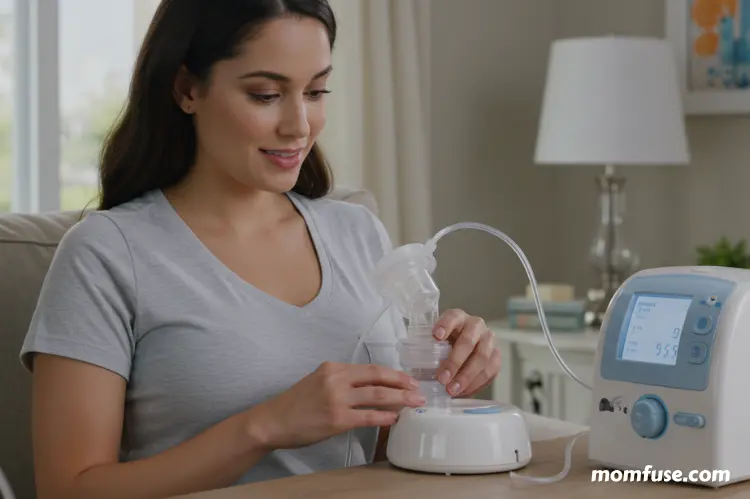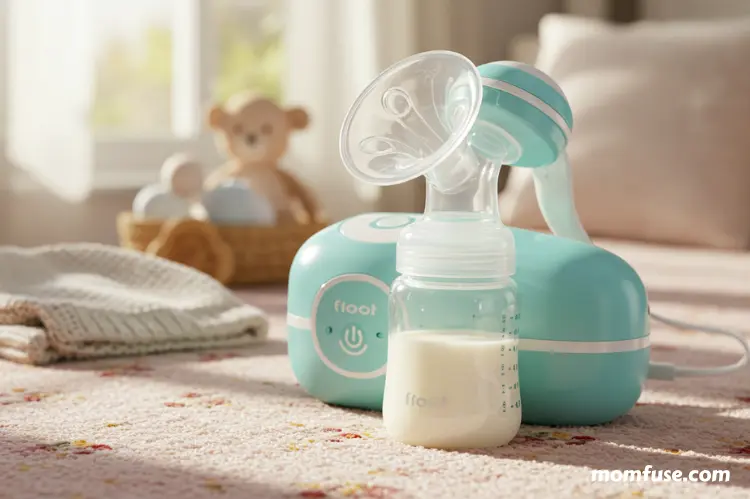For many breastfeeding moms, pumping plays a crucial role in ensuring consistent milk supply and providing flexibility in feeding. But one common question that often arises is: how long should you pump? The answer depends on several factors, including your goals, your baby’s age, and your body’s unique response to pumping.
Whether you’re exclusively pumping, supplementing nursing sessions, or trying to increase your supply, this guide will help you understand how long each pumping session should be and how to tailor your routine for maximum efficiency and comfort.
Pumping Basics: Why Duration Matters

Before diving into specific time frames, it’s important to understand why the length of your pumping session matters. Pumping too little may not fully empty your breasts, which can signal your body to reduce supply. On the other hand, pumping for too long can cause nipple soreness or frustration without significant benefits.
Pumping is most effective when you stimulate a letdown (the reflex that releases milk) and continue expressing until milk flow slows significantly. Understanding your body’s response and adjusting accordingly is key to successful and sustainable pumping.
How Long to Pump If You’re Exclusively Pumping
If you’re not nursing your baby directly and relying solely on pumping, consistency and duration are crucial. In the early days (first 12 weeks), you should aim to pump 8 to 12 times per day, mimicking a newborn’s feeding pattern.
Each pumping session should ideally last 15 to 20 minutes per breast or until milk flow significantly slows down. You can either pump both breasts simultaneously using a hands-free electric breast pump (which is more efficient) or one breast at a time.
As your supply stabilizes and your baby grows, you can adjust to 6 to 8 sessions a day, keeping sessions around 15 to 30 minutes long.
Pumping After Nursing: What’s the Ideal Time?
If you’re nursing and pumping to build a freezer stash or maintain supply, you’ll likely pump after a nursing session. Wait 15 to 30 minutes after feeding before starting a pumping session.
These sessions can be shorter, around 10 to 15 minutes, as you’re mostly collecting residual milk. Be patient—output may be low, especially early on, but it contributes to stimulating production and long-term supply management.
How Long Should You Pump to Build Supply?

Struggling with low milk output or preparing to return to work? Pumping to build supply requires strategy. To encourage your body to produce more, try the following:
- Pump every 2–3 hours during the day.
- Keep each session 20 to 30 minutes or until milk flow has slowed.
- Consider adding a power pumping session (see below).
Power pumping involves mimicking cluster feeding, a natural pattern babies use during growth spurts to increase supply. Here’s a sample schedule:
- Pump for 20 minutes
- Rest for 10 minutes
- Pump for 10 minutes
- Rest for 10 minutes
- Pump for 10 minutes
This intensive session can be done once a day for a few days to stimulate production.
When to Stop Pumping During a Session
Knowing when to stop pumping is just as important as knowing when to start. You should pump until the milk flow has slowed significantly, not necessarily until your breasts feel completely empty (as they never truly are).
Use the following signs to guide you:
- You’ve had 2–3 letdowns during the session.
- Milk flow has decreased to drops or stopped altogether.
- You’ve been pumping for 15–30 minutes, depending on your goals and comfort.
Over-pumping can irritate the nipples and may even cause inflammation, so it’s best to stop once you’ve reached a natural end.
Signs You Might Be Pumping Too Long (or Not Long Enough)
Getting the timing right isn’t always easy, especially for new moms. Here are a few signs that your current routine might need adjusting:
You’re pumping too long if:
- Your nipples feel sore, cracked, or bruised.
- You’re pumping for more than 30 minutes regularly with little output.
- You feel fatigued or anxious during each session.
You’re not pumping long enough if:
- You frequently feel engorged between sessions.
- Your supply is decreasing.
- You’re only pumping for 5–10 minutes at a time.
Aim to strike a balance between effective milk expression and your own comfort. This ensures you maintain a healthy milk supply without putting unnecessary strain on your body. Remember, a stress-free and consistent routine often leads to better pumping results over time.
Does Pumping Time Change as Baby Grows?
Yes, your pumping routine and duration will likely change as your baby grows. In the early months, you’ll pump more frequently and for longer sessions to establish supply. As your baby starts solid foods and breastfeeds less, you may need fewer pumping sessions—often just 2 to 3 times a day.
You might also find your breasts empty faster as your body becomes more efficient. If you’re still getting adequate milk output in 10–15 minutes, there’s no need to extend the session unnecessarily.
Listening to Your Body and Creating a Routine That Works
Ultimately, there’s no one-size-fits-all answer to how long should you pump. It depends on your goals, schedule, baby’s needs, and your own comfort. Whether you’re building a stash, maintaining supply while working, or exclusively pumping, your routine should work for you.
Here are a few tips:
- Keep a pumping log to track time, output, and patterns.
- Invest in a reliable electric breast pump to improve efficiency and comfort.
- Stay hydrated, eat well, and rest whenever possible.
- Be flexible—what works in month 1 may change in month 6.
Conclusion
Pumping is both a science and an art. Understanding how long to pump at each stage of your journey can make a big difference in maintaining supply and preserving your well-being. Whether you’re exclusively pumping or supplementing nursing, aim for sessions that leave you feeling comfortable and accomplished—not drained or frustrated.
Use timing as a guideline, not a strict rule. With the right tools, consistency, and a little patience, you’ll find a rhythm that supports both your body and your baby.
Read Next: Breast Reduction Before or After Pregnancy: Your Guide

